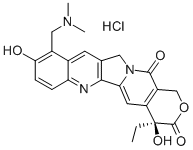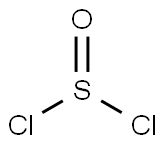2-Diisopropylaminoethyl chloride hydrochloride
Synonym(s):2-(Diisopropylamino)-ethylchloride hydrochloride;N-(2-Chloroethyl)-diisopropylamine hydrochloride
- CAS NO.:4261-68-1
- Empirical Formula: C8H19Cl2N
- Molecular Weight: 200.15
- MDL number: MFCD00012496
- EINECS: 224-238-1
- SAFETY DATA SHEET (SDS)
- Update Date: 2025-01-27 09:38:02

What is 2-Diisopropylaminoethyl chloride hydrochloride?
Chemical properties
white to yellow crystalline powder
The Uses of 2-Diisopropylaminoethyl chloride hydrochloride
2-Diisopropylaminoethyl chloride hydrochloride is used as an intermediate in pharmaceuticals, agrochemicals, dyestuffs and in organic synthesis.
The Uses of 2-Diisopropylaminoethyl chloride hydrochloride
Organic synthesis especially for introduction of the β-diisopropylaminoethyl radical.
Hazard
A poison by inhalation, and skin contact. A severe skin and eye irritant.
Safety Profile
A poison by ingestion, inhalation, and skin contact. A severe skin and eye irritant. When heated to decomposition it emits toxic vapors of NOx, HCl, and Cl-.
Properties of 2-Diisopropylaminoethyl chloride hydrochloride
| Melting point: | 129-132 °C(lit.) |
| storage temp. | Store below +30°C. |
| solubility | H2O: 0.1 g/mL, clear |
| PH | 4.0-4.5 (10g/l, H2O, 20℃) |
| Water Solubility | SOLUBLE |
| Sensitive | Hygroscopic |
| BRN | 3551603 |
| CAS DataBase Reference | 4261-68-1(CAS DataBase Reference) |
| EPA Substance Registry System | 2-Propanamine, N-(2-chloroethyl)-N-(1-methylethyl)-, hydrochloride (4261-68-1) |
Safety information for 2-Diisopropylaminoethyl chloride hydrochloride
| Signal word | Danger |
| Pictogram(s) |
 Corrosion Corrosives GHS05  Skull and Crossbones Acute Toxicity GHS06 |
| GHS Hazard Statements |
H301:Acute toxicity,oral H314:Skin corrosion/irritation |
| Precautionary Statement Codes |
P260:Do not breathe dust/fume/gas/mist/vapours/spray. P270:Do not eat, drink or smoke when using this product. P280:Wear protective gloves/protective clothing/eye protection/face protection. P303+P361+P353:IF ON SKIN (or hair): Remove/Take off Immediately all contaminated clothing. Rinse SKIN with water/shower. P305+P351+P338:IF IN EYES: Rinse cautiously with water for several minutes. Remove contact lenses, if present and easy to do. Continuerinsing. |
Computed Descriptors for 2-Diisopropylaminoethyl chloride hydrochloride
New Products
Indole Methyl Resin tert-butyl 9-methoxy-3-azaspiro[5.5]undecane-3-carboxylate Boc-His(Boc)-OH 2-CTC Resin 4-Chloro-7-tosy1-7Hpyrrolo[2,3-d]pyrimidine 5,7-Dibromo-1H-indole 2,5-dichloro-N-hydroxy-4,6-dimethylpyridine-3-carboximidamide 2,2-Dimethoxy-7-azaspiro[3.5]nonane hydrochloride 4-chloromethyl-5-methyl-1,3-dioxol-2-one (DMDO-Cl) R-2-BENZYLOXY PROPIONIC ACID 1,1’-CARBONYLDIIMIDAZOLE 1,1’-CARBONYLDI (1,2-4 TRIAZOLE) N-METHYL INDAZOLE-3-CARBOXYLIC ACID 4-((2-hydroxyethyl)thio)benzoic acid 1-(TERT-BUTOXYCARBONYL)-2-PYRROLIDINONE Methyl 6-methylnicotinate 3-Pyridineacrylic acid tert-Butyl carbazate TETRAHYDRO-2H-PYRAN-3-OL 2-((4-morpholinophenylamino) (methylthio) methylene) malononitrile 3-(4-morpholinophenylamino)-5-amino-1H-pyrazole-4-carbonitrile 2,4-dihydroxybenzaldehyde 1,3-Diethyl-1,3-Diphenylurea Methyl 2-methylquinoline-6-carboxylateRelated products of tetrahydrofuran








You may like
-
 2-(Diisopropylamino)-ethylchloride hydrochloride CAS 4261-68-1View Details
2-(Diisopropylamino)-ethylchloride hydrochloride CAS 4261-68-1View Details
4261-68-1 -
 Pyridine 99.5% HPLC /UV SpectroscopyView Details
Pyridine 99.5% HPLC /UV SpectroscopyView Details
110-86-1 -
 Guanine , 99%View Details
Guanine , 99%View Details
73-40-5 -
 Piperazine Spot supply, best priceView Details
Piperazine Spot supply, best priceView Details
110-85-0 -
 Dibutyl PhthalateView Details
Dibutyl PhthalateView Details
84-74-2 -
 Imidazole Spot supply, competitive priceView Details
Imidazole Spot supply, competitive priceView Details
288-32-4 -
 Octadecyl 3-(3,5-di-tert-butyl-4-hydroxyphenyl)propionate 98% (GC)View Details
Octadecyl 3-(3,5-di-tert-butyl-4-hydroxyphenyl)propionate 98% (GC)View Details
2082-79-3 -
 Thiourea 99% ARView Details
Thiourea 99% ARView Details
62-56-6
Statement: All products displayed on this website are only used for non medical purposes such as industrial applications or scientific research, and cannot be used for clinical diagnosis or treatment of humans or animals. They are not medicinal or edible.
